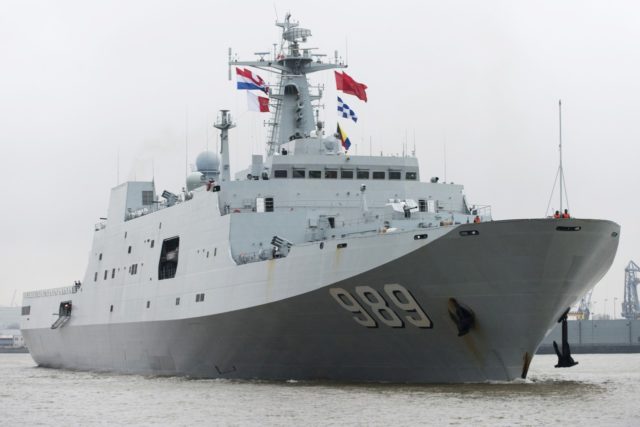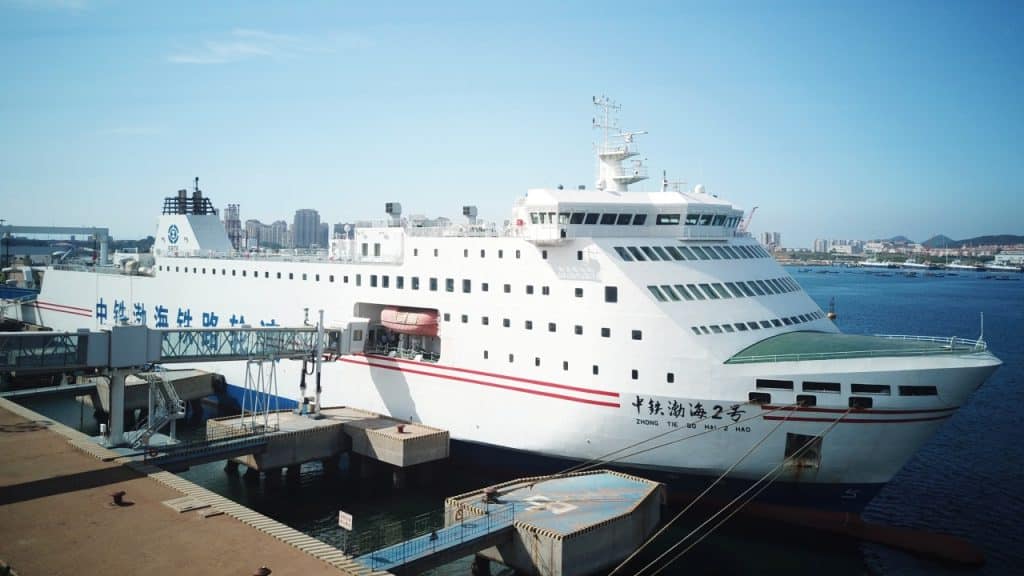On the sidelines of events around Taiwan, there is regular information about participation in Chinese civilian ferry exercises. It is worth taking a closer look at the place and role of these units in the logistics of the Chinese People’s Liberation Army. However, there are a few things that need to be underlined for starters.
First of all, practically in every country there is a pool of ships to be mobilized in case of war. NATO also has such a collective pool. Sometimes the military even orders shipowners to make changes to the design of the unit in order to adapt it to the transport of equipment. Due to the possibility of taking a large number of vehicles and people, as well as quick loading and unloading, ro-ro ferries and car ferries are the most popular among navies.
Such procedures were significantly reduced after the end of the Cold War, although Russian policy began to slowly reverse this trend even before its aggression against Ukraine. The mobilized car carrier Resolve participated in “Defender 2020”.
China was the exception to this rule. Due to the small number of transport and landing units, the Chinese navy was somewhat doomed to use civilian units. But the intensive expansion of transport capacity over the last dozen or so years has changed little here. You can even get the impression that the opposite is true. Tension around Taiwan is steadily increasing, and with it there are more and more reports of the participation of civilian units in the exercises.
The most recent case concerns the mobilization of seven Bo Hai Ferry Group ferries. The vessels, operating on a daily basis in the Yellow Sea and the waters of Pohaj Bay, were transferred to Fujian province, located opposite Taiwan.
👀 👀👀
Ferries on the move: 7 PLA-associated ferries have departed their normal Yellow Sea routes & appear to be headed south to Fujian Province opposite Taiwan.
Seems pretty likely to me that these vessels are or will be taking part in a PLA exercise or operation, nature TBD. pic.twitter.com/CEHvShjUhl– Tom Shugart ⚓️⚛️ (@ tshugart3) August 29, 2022
One important digression should be made at this point. Mobilized ferries are part of the naval militia. These paramilitary formations are known primarily for operating below the threshold of war in the disputed waters of the South China and East China Seas. Their main tasks include reconnaissance and observation activities, harassment of fishermen and coastguards of other countries, and even confrontations with warships.
However, this is only a part of the activity of the maritime militia. Already in 1950 mobilized civilian units made it possible to seize Hajnan. In the following years of the Cold War, militias even set up sea mines. Recently, mobilized civilian units have been used, for example, to transport materials for the construction of artificial islands in the South China Sea. Based on the available data, it can be assumed that the Bo Hai Ferry Group ferries have reinforced decks, are equipped with military communication equipment, and at least some of their crews undergo regular military training.
The design changes introduced by the Chinese Navy go far beyond simply strengthening the cargo decks. The ferries used for transporting the army need wharfs for unloading, and this eliminates them from the early stage of landing operations. Their usefulness in the stereotypical attack on the beaches and establishing a foothold is very limited, it is necessary to capture and secure ports.
The Chinese decided to solve this problem. In 2020, the state-owned CCTV broadcast a report on exercises with the Bang Chui Dao ro-ro ferry. The stern ramp of the unit was modified so that it allowed the ZTD-05 amphibious tanks to slide into the water straight from the deck and return the same way. It is not known whether this solution has become a standard.
How much can they carry?
The very difficult task of assessing possible maritime transport capabilities for military operations was undertaken by Thomas Shugart from the think tank Center for a New American Security. On the basis of the available data, it estimated the total displacement of ro-ro ferries belonging to Chinese shipowners at 1.35 million tons, and car and rail ferries – at 450 thousand tons. There are also Hong Kong shipowners with Ro-Ro with a total displacement of almost a million tons and car carriers with a total displacement of 940,000 tons. Together, this gives units with a displacement of over 3.7 million tons. for comparison, the total displacement of landing ships of the Chinese Navy is 370 thousand tons.

Chinese Changbai Shan Type 071 Landing Craft.
(Ministerie van Defensie)
Of course, displacement is not everything, and not every ferry meets the requirements of the military or has been adapted to them. Out of the enormous number of Shugart vessels, a retired US Navy officer selected thirty-four ro-ro ferries in his opinion the most suitable for a possible landing operation and which operators are certain to be part of the naval militia. It is worth noting that a modern large ro-ro ferry, such as the Chinese Xiang Long Dao, has a “garage” area three times larger than the American San Antonio Landing Craft or Chinese Type 071, and can take half as many people.
Based on the calculations of the area of their car decks, the estimated equipment of mixed Chinese army brigades and analogies with the procedures of the American armed forces, Shugart estimated that they would be able to carry four brigades along with supplies. Car and train ferries can add another three brigades. The analyst himself makes a reservation that these are all very estimates and should be approached with great caution. The adopted methodology, assumptions and calculation methods are presented in the thread below.
Some folks may recall this article I wrote last year in @WarOnTheRocks on how the PRC could use civilian shipping — and especially roll-on / roll-off ferries & vehicle carriers — to augment traditional PLA Navy amphibious sealift capacity in a Taiwan invasion. https://t.co/S6aM1oBbhc
– Tom Shugart ⚓️⚛️ (@ tshugart3) July 29, 2022
A few words about the logistics of CHALW
As can be seen from the cursory overview, civilian units significantly increase China’s ability to transport troops and supplies to Taiwan. After all, ro-ro and car ferries are designed to take as many vehicles and passengers as possible, and to load and unload as quickly as possible. The survival of such units in the event of a full-scale conflict remains a separate issue, but we will not deal with that here.
Reliance on civilian resources is an emergency measure for most of the world’s armed forces. In the People’s Liberation Army of China, however, it is doctrinal. Military logistics relies on the extensive use of civilian vehicles (for example, the Chinese Army still has very few low-loaders to transport tanks and other heavy vehicles). The state’s forces have been implementing the concept of “civil-military fusion” for years, aimed at enabling the armed forces to use civilian resources as widely and effectively as possible in the event of war. Usually, in this context, we talk about scientific research and telecommunications infrastructure, but also about logistics.
This approach has historical roots. The logistics of the People’s Liberation Army of China has been weak for years, and also highly decentralized. It was only in 2016 that the Joint Logistics Support Force, responsible for the logistics of the entire armed forces, achieved operational readiness. As part of this reform, five regional Joint Logistics Support Centers were created, corresponding to the five Action Theaters Headquarters. It is worth noting, however, that the Joint Logistics Support Force is not subordinated to the Supreme Command, but to the Central Military Commission, which is part of the Chinese Communist Party.
in this way the party gains another tool of control over the army. This state of affairs is strengthened by the extensive use of paramilitary formations subject to the CEC in the logistic system. On the other hand, the use of civil resources can reduce costs and accelerate the implementation of modern solutions.
See also: African policeman. How Rwanda tries to steer the continent’s security policy
David290, Creative Commons Attribution-Share Alike 4.0 International

